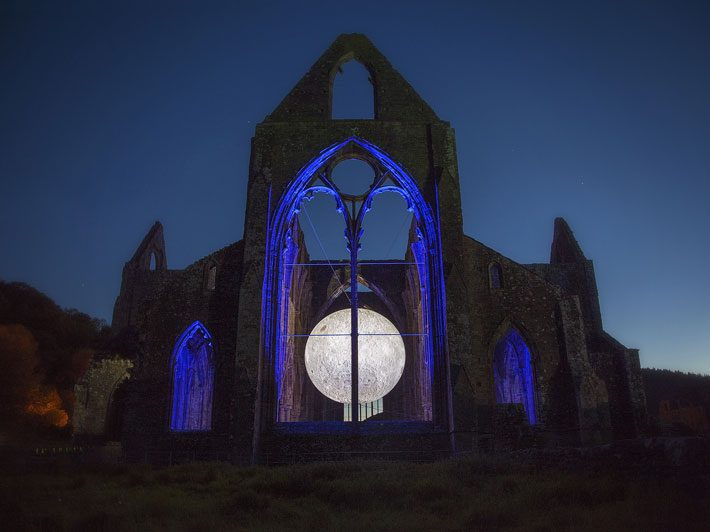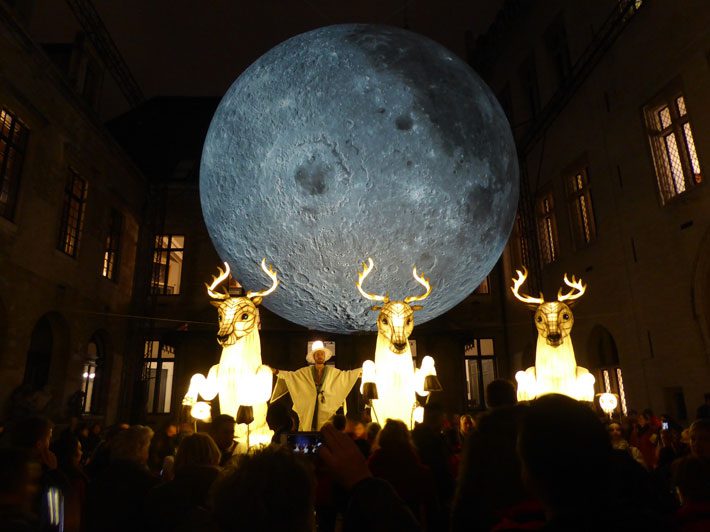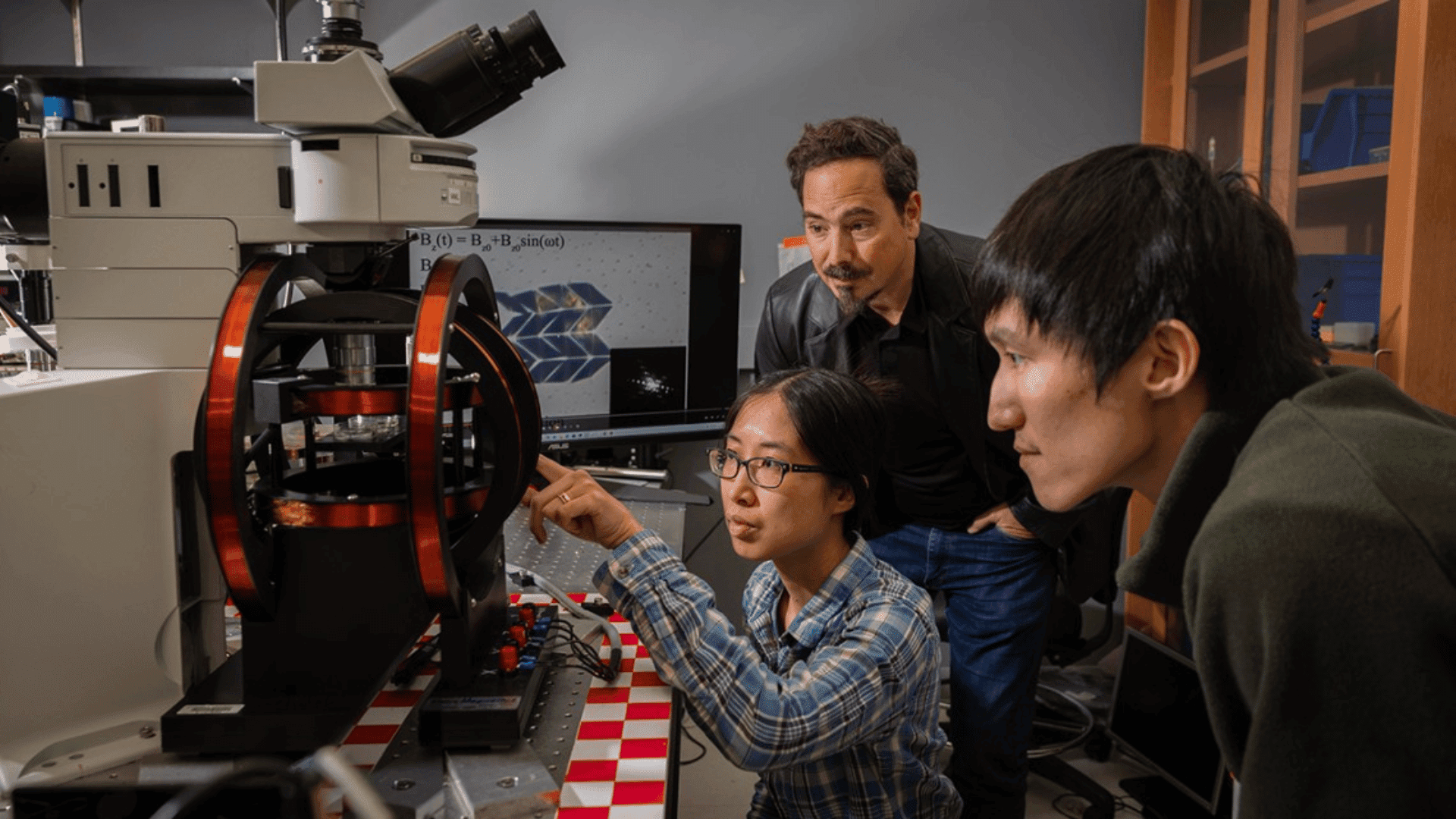Completing rituals or events under moonlight is a classic tradition in many cultures. The moon holds a great deal of significance in almost all societies, from the ancient to the modern. But the moon itself remains far out of reach, accessible only to those with years of training and deep pockets. Us common folk must settle for the Museum of the Moon.
A touring art exhibit by UK artist Luke Jerram, Museum of the Moon is a scaled model of the lunar body. Each centimeter of the sculpture equals 3.1 miles of the actual moon’s surface, resulting in a scale of 1:500,000. The sculpture is internally lit, features NASA imagery of the lunar surface, and measures 23 feet in diameter. The image itself is 69 feet wide and displayed at 120 dpi (dot per inch).
What makes the Museum of the Moon even more fascinating is how it’s presented. Each event or host displays it in their own way, whether inside a cathedral or hovering over a swimming pool. At the Greenwich + Docklands International Festival, it hung in a park for visitors to enjoy. Dubai used it in place of a chandelier. In Glasgow, it illuminated a live concert, acting in place of a spotlight.
The project is a collaboration between Jerram, the UK Space Agency, the University of Bristol, and The Association for Science and Discovery Centres. Audio, including a unique soundtrack, is provided by BAFTA and composer Dan Jones. The image projected on the sphere itself to recreate the moon’s surface was taken by the US. Astrology Science Center.

Jerram was inspired by his time living in Bristol and observing how the moon affected the tides. While cycling over Avon Cut, he noticed the massive variation each day, inspiring both Museum of the Moon and “Tide,” another artwork. His other current projects include “Play Me, I’m Yours,” a series of public pianos for anybody to enjoy; the “Impossible Garden”; and “E. coli,” a giant inflatable sculpture of… well, E. coli.
Museum of the Moon has been well-received by audiences. A curator visiting in Marseille commented “the Museum of the Moon is much more than just a demonstration of technical and scientific prowess. It creates a personal connection with the nocturnal sky, heightening the experience of gazing at a ‘full moon’ by generating a sense of nearness. The installation exudes extraordinary gentleness and inspires reflection, contemplation, celebration, and respect.” One woman from Bristol said her “first reaction was Wow!” There are also a few concerns, such as from Rebecca, a six-year-old resident of Kendal, UK: “Will you put the moon back afterwards?”
Rebecca’s question will have to remain unanswered for the time being, as Museum of the Moon has yet to complete its tour. Through 2019, the exhibit will travel across the UK. There are also shows in Germany, Holland, the USA, Finland, Australia, and Romania. (It should be noted that several moons are touring simultaneously.) It’s possible that the exhibit will continue touring after the last shows in April, but nothing has been stated by the artist or on the official website.

It’s easy to call Museum of the Moon an art installation, but it’s so much more. It’s a chance for those interested in space to experience the beauty of the galaxy up-close. It’s a science exhibit capable of teaching more than a textbook. It’s an audio-visual experience unlike no other. Above all else, it’s a testament to creativity and how inspiration can strike anywhere. It’s one small step for Luke Jerram, but one giant leap for the scientific and artistic communities.
Follow our World of Creation where “what if” becomes “what is.”







